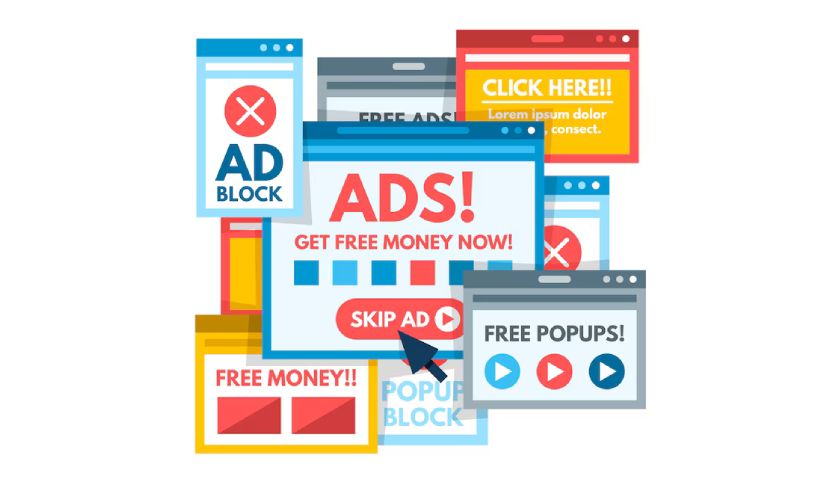We’ve all been there – scrolling through a website when the same ad pops up for the fifth time in an hour. Your brain automatically tunes it out, and what was once eye-catching becomes virtually invisible. This phenomenon, known as ad fatigue, is the silent killer of many Google Ads campaigns.
We recently talked with the people at Pitch Black Digital Marketing ( Pitch Black specialise in Google Ads, Google SEO, website development, and website design, ), and they confirmed what many marketers suspect: ad fatigue is becoming an increasingly common challenge as digital spaces become more saturated with advertising.
When users repeatedly see the same ads, engagement plummets, click-through rates (CTRs) nosedive, and your ROI suffers. But here’s the million-dollar question: can ad fatigue be completely avoided, or is it just an inevitable part of digital marketing? In this article, we’ll dive into strategies to combat ad fatigue and keep your Google Ads fresh and effective.

Understanding Ad Fatigue
Ad fatigue occurs when your audience has seen your ads so many times that they start actively ignoring them. It’s like that catchy song you loved the first few times but now change the station whenever it comes on. In the digital advertising world, this translates to decreasing CTRs, higher costs per click, and ultimately wasted ad spend.
How do you know if your audience is experiencing ad fatigue? Watch for telltale signs: declining CTRs despite stable impressions, increasing frequency metrics, and diminishing conversion rates over time. If your once-stellar campaign is showing these symptoms, ad fatigue has likely set in.
Beyond simple repetition, ad fatigue can be accelerated by several factors: targeting that’s too narrow (showing ads to the same small group repeatedly), creative that wasn’t compelling in the first place, or messaging that doesn’t evolve with your audience’s needs and interests.
The consequences extend beyond immediate campaign metrics. Prolonged exposure to the same ads can damage brand perception, with users associating your brand with annoying, repetitive advertising rather than value. This can create a negative impression that persists long after you’ve refreshed your creative.
The Psychology Behind Ad Blindness
Human brains are remarkable pattern-recognition machines. After seeing the same ad multiple times, users develop what psychologists call “selective attention” – the ability to unconsciously filter out stimuli deemed unimportant or redundant. In advertising contexts, this manifests as “banner blindness” or “ad blindness,” where users’ eyes literally skip over ad placements they’ve learned to recognize.
Research shows that ad effectiveness typically follows a diminishing returns curve. Initial exposures build awareness and interest, but each subsequent exposure yields progressively smaller benefits until eventually turning negative. This tipping point varies by audience and creative, but it underscores why monitoring frequency is crucial to campaign health.
Several factors can accelerate the onset of ad blindness. Poor targeting forces users to process irrelevant content repeatedly. Low-quality creative fails to make a memorable impression even on first viewing. And static messaging that doesn’t acknowledge where users are in their customer journey quickly becomes background noise.
Understanding these psychological mechanisms is the first step toward developing strategies that work with human attention patterns rather than against them.

Dynamic Creative Optimization (DCO)
Dynamic Creative Optimization represents one of the most powerful weapons in the fight against ad fatigue. DCO uses automation to deliver personalized ad experiences at scale, tailoring creative elements based on user data, behavior, and context.
Rather than showing everyone the same static ad, DCO platforms can automatically adjust headlines, images, CTAs, and other elements to create thousands of unique combinations. This keeps content fresh and relevant, significantly extending the effective lifespan of your campaigns.
Implementing DCO in Google Ads starts with building a strong foundation of creative assets. Develop multiple versions of headlines, descriptions, images, and CTAs that can be mixed and matched. Then use Google’s audience signals and your own first-party data to create rules for how these elements should combine for different segments.
For maximum effectiveness, segment your audience beyond basic demographics. Consider factors like purchase history, browsing behavior, time of day, device type, and location. The more granular your segmentation, the more personalized and effective your dynamic creative can be.
Companies implementing DCO effectively have seen CTR improvements of 30-50% and conversion rate increases of up to 200% compared to static campaigns. The key is continuous refinement – use performance data to identify which combinations work best for which segments, and continuously update your creative library.
Effective A/B Testing Strategies
While DCO handles personalization at scale, good old-fashioned A/B testing remains essential for fighting ad fatigue. Systematic testing helps you discover what resonates with your audience and provides fresh creative directions when performance starts to dip.
Setting up proper A/B tests in Google Ads requires discipline. Test one variable at a time with statistically significant sample sizes. Create experiment and control groups that receive different versions of your ad, and let the data guide your decisions rather than gut feelings.
Elements worth testing include headlines (emotional vs. rational appeals), imagery (product-focused vs. lifestyle), CTAs (action-oriented vs. benefit-oriented), and value propositions (price-focused vs. quality-focused). Even small changes can yield significant performance differences.
Develop a testing schedule that aligns with your campaign objectives. High-volume campaigns might support weekly tests, while lower-volume campaigns might need monthly rotation. The key is establishing a cadence that generates enough data for confident decisions while keeping creative fresh.
When interpreting results, look beyond simple CTR. Consider the entire conversion path to determine if improvements in click rates translate to meaningful business outcomes. A headline might generate more clicks but attract the wrong audience, ultimately reducing conversion quality.
Maximizing Responsive Search Ads
Google’s shift toward responsive search ads (RSAs) represents both a challenge and an opportunity in the battle against ad fatigue. RSAs allow you to input multiple headlines and descriptions that Google automatically tests and optimizes, showing different combinations to different users.
To maximize RSA performance, focus on writing truly distinct variations rather than minor tweaks of the same message. Each headline and description should be able to stand on its own while addressing different user needs, pain points, or stages of awareness. This diversity gives Google’s algorithm more to work with in finding winning combinations.
When writing RSAs, pin essential elements sparingly. While pinning ensures certain messages always appear in specific positions, it limits the system’s ability to test and optimize combinations. Instead, trust the algorithm to find winning combinations, and use reporting to identify which elements perform best.
Monitor performance using Google’s RSA reporting tools, which show how often different assets are served and their relative performance. Replace underperforming assets regularly to maintain freshness and give the system new variations to test.
The beauty of RSAs in fighting ad fatigue is that they essentially handle creative rotation automatically, continuously testing new combinations to find what works best for each user at each moment. This dynamism helps maintain performance even as individual users see your ads multiple times.
Creative Refreshment Strategies
Even with dynamic tools like DCO and RSAs, eventually, you’ll need to refresh your creative entirely. The question is when and how to do it most effectively.
Rather than waiting for performance to tank, establish proactive refresh cycles based on campaign data. High-frequency campaigns targeting the same audience might need refreshes every 2-4 weeks, while lower-frequency campaigns might sustain performance for 6-8 weeks before requiring updates.
When refreshing creative, consider evolution versus revolution. Evolution makes incremental changes while maintaining successful elements – perhaps keeping a winning headline but updating imagery. Revolution introduces entirely new concepts, messaging, and visuals. Most successful long-term campaigns balance both approaches, with regular evolutionary updates punctuated by occasional revolutionary overhauls.
Seasonal and trend-based updates provide natural opportunities for refreshes. Align creative with holidays, seasons, industry events, or trending topics to maintain relevance. Just ensure these timely references actually resonate with your specific audience rather than jumping on every trending hashtag.
The most effective creative refreshes maintain brand consistency while introducing novelty. Your visual identity, tone of voice, and core value proposition should remain recognizable even as specific creative elements change. This balance keeps ads fresh without sacrificing the brand equity you’ve built.
Advanced Tactics for Sustained Engagement
Beyond basic creative refreshes, sustained engagement requires deeper strategic thinking about how your ads fit into users’ overall experience.
Leverage audience insights to predict and preempt fatigue. Analyze engagement patterns to identify which segments fatigue fastest and which creative elements retain attention longest. Use these insights to develop targeted refresh strategies for different audience segments rather than a one-size-fits-all approach.
Coordinate across channels to manage overall brand exposure. Users who see your brand on multiple platforms fatigue faster than those with more limited exposure. Implement cross-channel frequency capping and coordinate creative refreshes across platforms to avoid overwhelming users.
Automation and machine learning can help identify early signs of fatigue before performance metrics plummet. Set up automated alerts for engagement decline patterns and use predictive models to forecast when specific segments will need fresh creative.
Remarketing presents special challenges for ad fatigue, as these users have already demonstrated interest but are exposed to your ads more frequently. Combat this with a tiered messaging approach – develop distinct creative sequences that evolve based on user interactions and time since initial engagement.
Measurement and Analytics
You can’t manage what you don’t measure. Comprehensive analytics are essential for identifying, preventing, and addressing ad fatigue effectively.
While CTR is the most obvious indicator of fatigue, monitor additional metrics like view-through rate, engagement time, conversion rate, and frequency to get a complete picture. Decreasing CTR with stable conversion rates might indicate you’re losing casual browsers but retaining serious prospects – not necessarily a bad thing.
Set up proper tracking to measure ad exposure across devices and platforms. This helps identify actual frequency from the user perspective rather than platform-specific metrics that might underestimate total exposures.
Create dashboards that highlight leading indicators of fatigue before performance crashes. These might include velocity metrics (rate of CTR change), frequency distributions (what percentage of users see ads how many times), and segment-specific engagement trends.
When calculating ROI for creative refresh initiatives, factor in both the costs of new creative development and the opportunity cost of continuing with fatigued assets. This comprehensive view often reveals that regular refreshes are far more economical than letting campaigns run until performance collapses.
The Path Forward: Embracing Dynamic Adaptation
So, can ad fatigue be completely avoided? The honest answer is no – human psychology and attention patterns make some degree of fatigue inevitable. However, with strategic approaches like those outlined above, you can dramatically delay its onset and mitigate its impact.
The future of fatigue-resistant advertising lies in increasingly sophisticated personalization. As machine learning and creative technologies advance, we’re moving toward truly adaptive campaigns that respond to individual engagement patterns in real-time, automatically refreshing when fatigue signals appear.
For marketers today, the most practical approach is embracing what I call “planned impermanence” – building campaigns with change built into their DNA rather than as an afterthought. This means developing modular creative systems, establishing regular testing cadences, and viewing creative as an evolving conversation rather than a fixed message.
Remember what the team at Pitch Black Digital Marketing emphasized: the brands that thrive aren’t necessarily those with the biggest budgets, but those most willing to adapt, test, and evolve their approach based on real user behavior. By making creative refreshment a core part of your strategy rather than a reactive fix, you’ll stay steps ahead of ad fatigue and keep your Google Ads performing at their peak.

